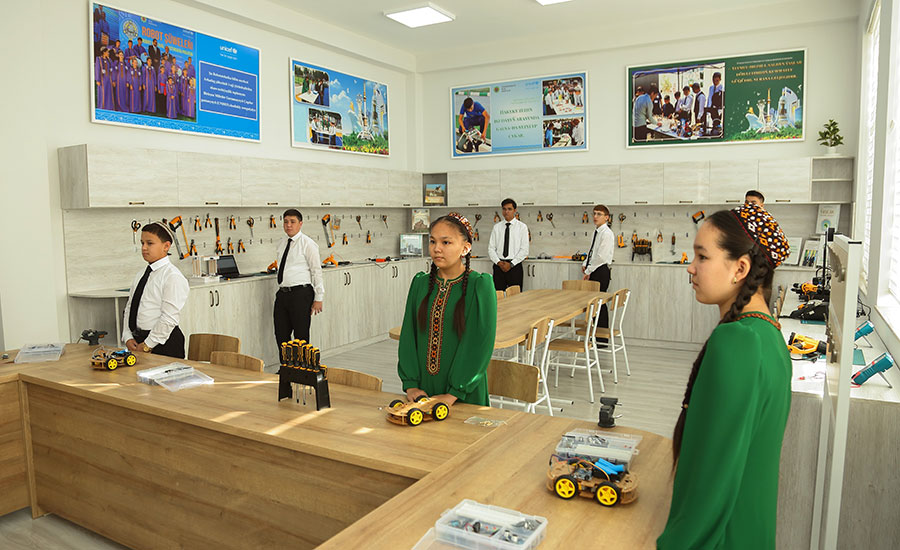The woody vegetation of Kopetdag does not form continuous massifs. On the one hand, it is a unique environment-forming resource for ecosystems, and on the other, a component of nature that depends on the changing environment. Guljemal Gurbanmamedova, senior researcher at the Laboratory of Ecology, Forests and Pastures of the National Institute of Deserts, Flora and Fauna, describes some features of the plant world in the Kopetdag foothills:
"The arid climate has formed special types of forests in Turkmenistan - desert saxaul, mountain juniper and tugai - thickets along the Amu Darya riverbanks. Mountain forests are most resistant to external weather factors. The sparseness of their stands is a direct consequence of the climate's aridity and plants acquiring special bioecological features. The drier the conditions, the further the root system extends, and the more 'modest' the aboveground part.

Plants' adaptability to xerophytic environments is a hereditary feature, which is why they have survived to this day and can still adapt to further climate aridization.
The flora has been studied for decades, but it cannot be claimed that all processes of its existence are fully understood and interpreted, which is difficult to do unequivocally against the backdrop of changing nature and weather. How will moisture-loving mesophytes behave, for example, which grow in conditions of sufficient water supply - walnut, oriental plane and dewberry? Adaptation is easier for drought-resistant xerophytes that occupy waterless areas - Pontic hawthorn, Turkmen almond, Griffith's redbud and Turkmen maple. There are so-called obligate trees characterized by long-term development, such as small elmб common and Turkmen pears. Collected botanical data show that even within a single natural complex, one can find plants of the same species differing in life morph or habitus - general appearance. Overall, woody plants are represented by 12 biomorphic elements.

To identify centers of woody species origin, a geographical analysis was carried out based on counting and classification. In these circumstances, rarity is not always regarded as an indicator threatening the species' state. Under normalized conditions, the biological resilience of a natural population proves quite reliable. However, if the population's age composition deviates from norms, for example, lack of undergrowth or loss of generative function by individuals (shortened shoots, fruits not forming or not ripening), it is a serious cause for concern about the species' future. Even without human intervention, nature itself creates precedents contributing to a species' departure from the flora, and this process, though stretched over centuries, is quite natural. Some species reduce their significance for the country's mountainous territory, and niches are occupied by flora species more resistant to arid environments.


The diversity of mountain vegetation has been scientifically recorded for over a hundred years, with information rich in examples of species not always suitable for warm climates - a legacy from previous, wetter geological epochs. Resilient plants that lingered here adapted to changing conditions, partly becoming endemics growing in narrowly local territories. In total, botanists trace 46 endemic species at intersecting range boundaries, constituting over 25 percent of the total woody mountain flora. In the general contour of endemism, under conditions of territorial isolation from closely related neighboring regions, the notable richness of such species emphasizes the significant age of the plant cover of the ancient Kopetdag mountain range. These unique genetic resources of the country exist in a fragile balance today. Biologists continue to study the current state and composition of woody plants, assessing prospects for their conservation."









